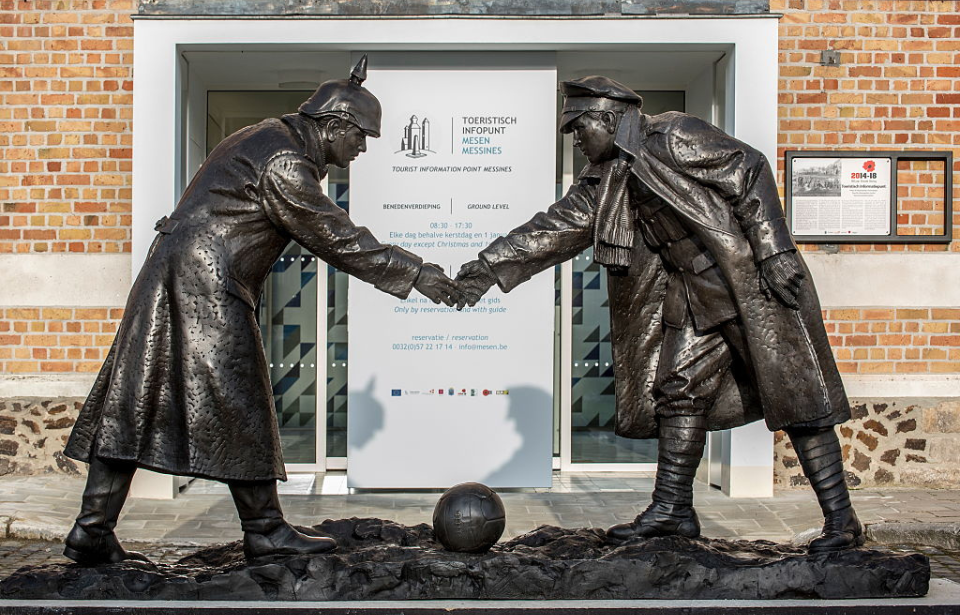The First World War was a particularly deadly conflict, due to both the number of countries involved and the weapons developed via technological advancements. While, from the outside, it may look like the warring sides didn’t share common ground, there is one recorded incident that saw them lay down their weapons: the Christmas Truce of 1914. This short-lived ceasefire saw hails of bullets replaced with holiday carols and gift exchanges.
Calls for peace
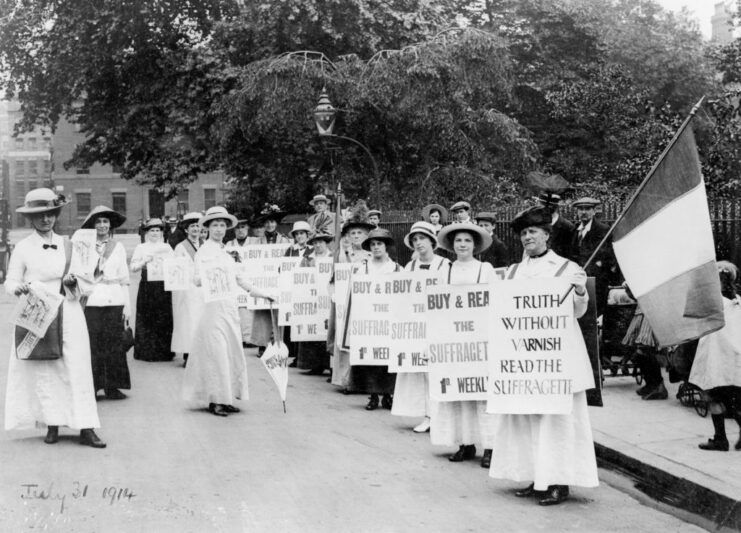
Well before the Christmas Truce of 1914, calls were made for the fighting in Europe to stop. Just days before World War I broke out, British Foreign Secretary Sir Edward Grey attempted to organize a peace conference, with the hopes of preventing an all-out conflict. While things were looking hopeful after France agreed to attend, these hopes were dashed when Germany declined to participate.
With no signs the fighting would end anytime soon, a group of 101 British Suffragettes wrote what became known as the “Open Christmas Letter,” addressed to the women of Austria and Germany. That December, Pope Benedict XV also requested a truce, but this fell on deaf ears.
How common were truces during the First World War?
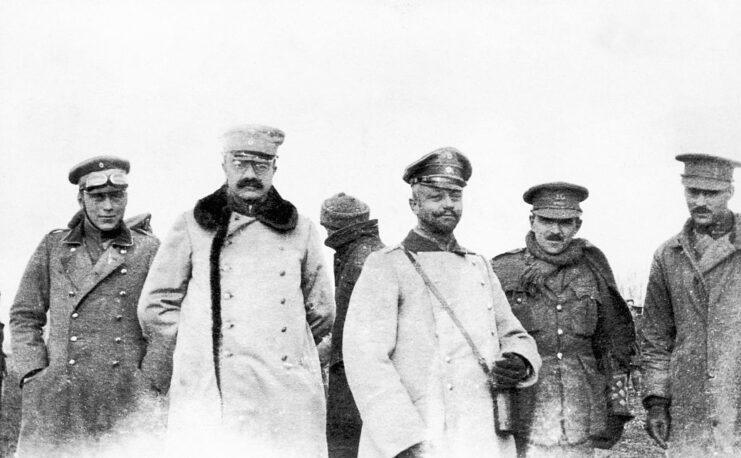
At the time the Christmas Truce occurred in December 1914, the First World War had been raging for about five months. While the fighting was fierce and quick, there were locations where mini ceasefires took place, where smaller concentrations of troops were stationed.
Spontaneous truces were reported between the Russian and Austro-Hungarian forces on the Eastern Front within the early days of the conflict, while ceasefires between the British and Germans occurred sporadically, beginning in November 1914. While the cause was typically poor weather, there were times when the fighting was paused to allow both sides to collect their war dead.
Other truces occurred in December 1914, before Christmas. In the Yser sector, Belgian and German troops agreed to temporarily stop fighting, so that the former could write and send letters to their families. While tensions were higher between the French and Germans, short-lived truces did occur, particularly in Comines.
Christmas Truce of 1914
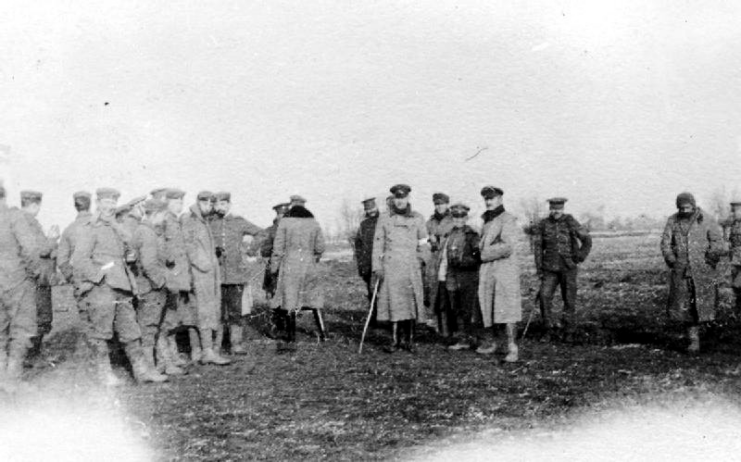
The Christmas Truce of 1914 began on December 24, 1914, and, in some areas along the 30-mile British-controlled section of the Western Front, lasted until New Year’s Day. The Germans were the ones to initiate it, singing carols, lighting lanterns and putting up miniature Christmas trees. This inspired the British to join it, with an estimated 100,000 soldiers participating in the informal ceasefire.
Before long, troops on both sides were leaving their trenches and crossing the expanse of No Man’s Land. Some shook hands and talked about their lives at home, while others exchanged gifts consisting of items found in their trenches, such as alcohol, tobacco, small clothing items and food.
There was a small gap in time between the truce taking place and the wider public learning about it. On December 31, The New York Times published an article about the ceasefire.
Did the opposing sides actually play a game of football?
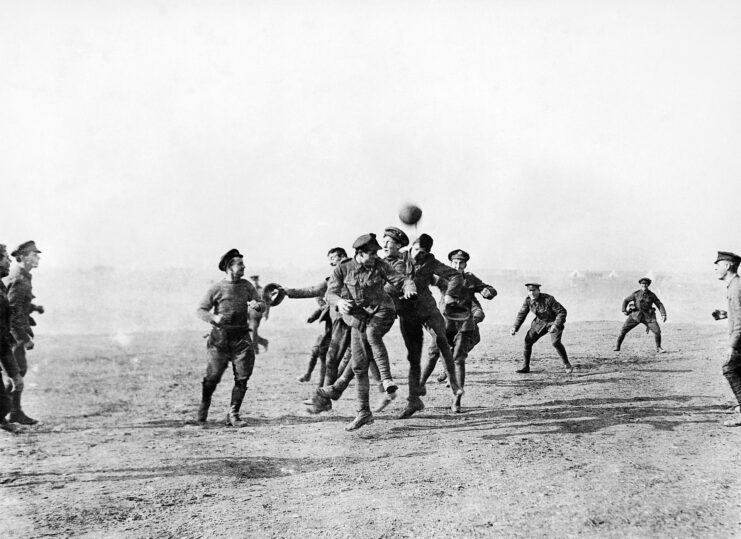
One of the widely recounted stories was that the Germans and British played a game of football (soccer, in America) after they gathered in No Man’s Land. It’s a touching thought, the opposing sides coming together to play a European pastime, but many question whether or not it actually occurred.
In 1984, historians Shirley Seaton and Malcolm Brown did some research and concluded that, while it’s likely there were attempts to play organized games of the sport, the terrain of No Man’s Land, with its mud and craters, would have created difficulties. They add that its probable matches occurred, but on a much smaller scale and with makeshift “balls” – eg. bully-beef tins.
Later truces were discouraged
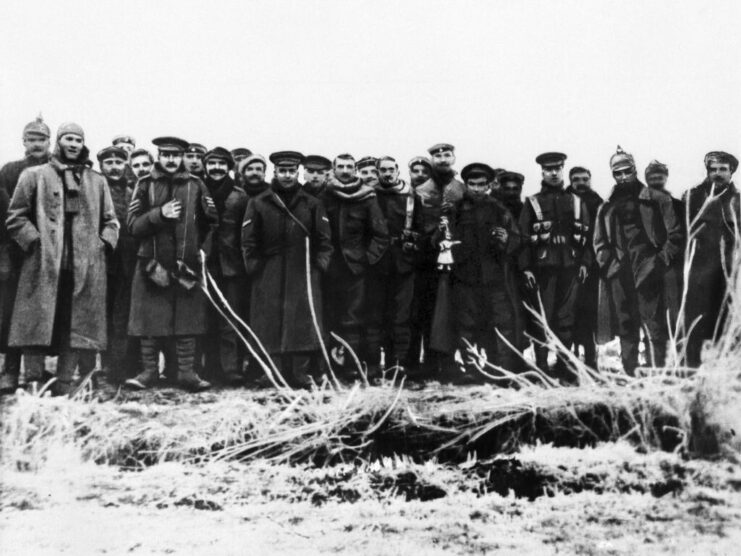
The Christmas Truce of 1914 was the last large-scale ceasefire to occur during the First World War. Not everyone agreed with this type of fraternization and thus discouraged their men from doing anything similar in the future. That’s not to say, however, that none occurred; some soldiers ignored these orders.
On Easter 1915, some Orthodox troops participated in a minor ceasefire, while, that May, the Ottomans and the Australian and New Zealand Army Corps (ANZAC) agreed to a nine-hour pause in the fighting, so each side could collect their dead and give them a proper burial.
More from us: Zone Rouge: The WWI-Era Battlefields That Are Still Dangerous Over 100 Years Later
When it came to Christmas, truces like the one in 1914 did occur, but on a much smaller scale and largely outside of the British Expeditionary Force (BEF). In the French sector, for example, there were instances of singing carols and throwing gifts across lines.
